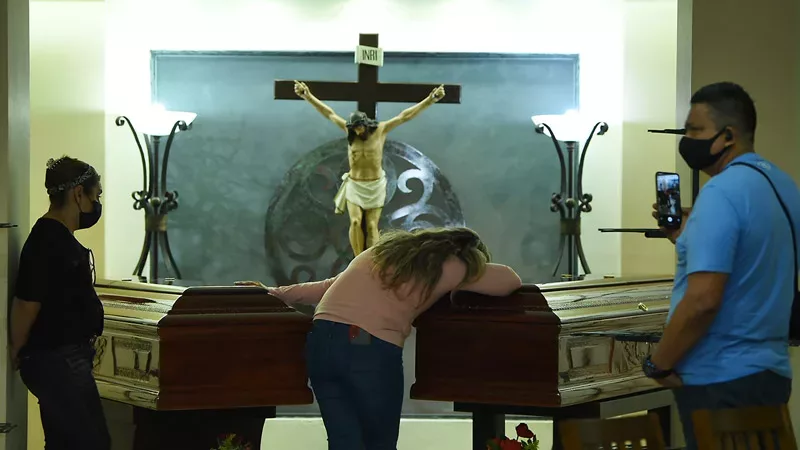The number of victims located in cemeteries or clandestine graves doubled in 2021 compared to 2020, according to data published on the transparency portal of the Office of the Attorney General of the Republic. Last year, the year marked by the pandemic’s beginning, the number of victims located was 33, distributed in 11 graves and four clandestine cemeteries.
By 2021, the number of victims was 66; their remains were found in 20 graves and two clandestine cemeteries. This implies that the number of findings was double when comparing the two time periods. The data also show that, in 2019, the number of victims located in cemeteries and clandestine graves was 54.
In addition to the five victims located until February 2022, the total number of findings between January 2019 and February 2022 is 158. This data only includes cases that have been prosecuted and those that do not have a judicial reservation. The total number of clandestine graves where these victims were found is 51. Added to this are the 13 clandestine cemeteries located in the same period.
The relationship between the period and the findings shows that a victim was located every seven days since 2019, and a clandestine cemetery or grave every 18 days. In 2019, 15 covert graves were found, of which three were in the municipality of Soyapango. In 2020, the year in which Salvadorans spent several months in quarantine due to the COVID-19 pandemic, 11 findings were reported.
In 2021, 20 clandestine graves were found nationwide: four in the municipality of Chalchuapa, three in Zaragoza, and two in Antiguo Cuscatlán. The latter municipality is where the Swiss farm is located, where the bodies of the brothers Guerrero Toledo and Jimena Ramírez, three young people who were reported missing, were found.
En 2021 se encontraron 66 personas en cementerios clandestinos
El número de víctimas localizadas en cementerios o fosas clandestinas se duplicó en 2021 respecto al año 2020, según datos publicados en el portal de transparencia de la Fiscalía General de la República. El año antepasado, año marcado por el inicio de la pandemia, el número de víctimas localizadas fue de 33, distribuidas en 11 fosas y cuatro cementerios clandestinos.
Para el año 2021, la cifra de víctimas fue de 66, sus restos fueron encontrados en 20 fosas y dos cementerios clandestinos. Eso implica que el número de hallazgos fue el doble al comparar ambos períodos de tiempo. Los datos también dan cuenta de que, en 2019, el número de víctimas localizadas en cementerios y fosas clandestinas fue de 54.
Sumados a las cinco víctimas localizadas hasta febrero de 2022, el total de hallazgos entre enero de 2019 y febrero de 2022 es de 158. Estos datos sólo incluyen los casos que han sido judicializados y los que no tienen reserva judicial. El total de fosas clandestinas, en donde se hizo el hallazgo de esas víctimas, es de 51. A eso se suman los 13 cementerios clandestinos localizados en el mismo lapso.
La relación entre el período de tiempo y los hallazgos, da cuenta que se localizó una víctima cada siete días, desde 2019 y un cementerio o fosa clandestina cada 18 días. En 2019, fueron encontradas 15 fosas clandestinas, de las cuales tres estaban en el municipio de Soyapango. En 2020, año en que los salvadoreños pasaron varios meses en cuarentena por la pandemia de covid-19, se reportaron 11 hallazgos.
En 2021, se encontraron 20 fosas clandestinas a nivel nacional: cuatro en el municipio de Chalchuapa, tres en Zaragoza y dos en Antiguo Cuscatlán. Este último municipio es donde está localizada la finca Suiza, en donde fueron encontrados los cuerpos de los hermanos Guerrero Toledo y Jimena Ramírez, tres jóvenes que fueron reportados como desaparecidos.

